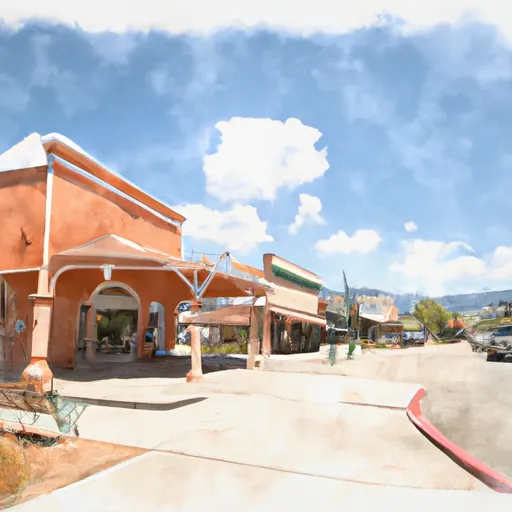-
 Snoflo Premium
Snoflo Premium
Get unlimited access to all our content
With no Ad interruptions! - Start Your Free Trial Login with existing account
Alta
Eden Index
Climate
8.8
•
Recreation
8.5
•
Community
1.6
•
Safeguard
6.9/10

Alta, California is a small community located in the Sierra Nevada Mountains. The area experiences a Mediterranean climate with hot, dry summers and cold, wet winters. The hydrology constituents in the area include the American River, which provides water for recreation and irrigation. Outdoor recreation opportunities abound in Alta, including skiing and snowboarding at the nearby Alta Ski Resort during the winter months. During the summer, visitors can enjoy hiking, mountain biking, and fishing in the surrounding areas. Additionally, the American River offers opportunities for white water rafting and kayaking. Alta is a beautiful and vibrant community with a diverse range of activities to suit any outdoor enthusiast.
What is the Eden Index?
The Snoflo Eden Index serves as a comprehensive rating system for regions, evaluating their desirability through a holistic assessment of climate health, outdoor recreation opportunities, and natural disaster risk, acknowledging the profound impact of these factors on livability and well-being.
Climate Health Indicator (CHI): 8.8
Alta receives approximately
1622mm of rain per year,
with humidity levels near 63%
and air temperatures averaging around
13°C.
Alta has a plant hardyness factor of
8, meaning
plants and agriculture in this region tend to thrive here all year round.
By considering the ideal temperature range, reliable water supplies, clean air, and stable seasonal rain or snowpacks, the Climate Health Indicator (CHI) underscores the significance of a healthy climate as the foundation for quality living.
A healthy climate is paramount for ensuring a high quality of life and livability in a region, fostering both physical well-being and environmental harmony. This can be characterized by ideal temperatures, reliable access to water supplies, clean air, and consistent seasonal rain or snowpacks.
Weather Forecast
Streamflow Conditions
Lower Sacramento
Area Rivers
Lower Sacramento
Snowpack Depths
Lower Sacramento
Reservoir Storage Capacity
Lower Sacramento
Groundwater Levels
Recreational Opportunity Index (ROI): 8.5
The Recreational Opportunity Index (ROI) recognizes the value of outdoor recreational options, such as parks, hiking trails, camping sites, and fishing spots, while acknowledging that climate plays a pivotal role in ensuring the comfort and consistency of these experiences.
Access to outdoor recreational opportunities, encompassing activities such as parks, hiking, camping, and fishing, is crucial for overall well-being, and the climate plays a pivotal role in enabling and enhancing these experiences, ensuring that individuals can engage in nature-based activities comfortably and consistently.
Camping Areas
| Campground | Campsites | Reservations | Toilets | Showers | Elevation |
|---|---|---|---|---|---|
| Bear River County Park | 23 | 1,749 ft | |||
| Shirttail | 30 | 3,943 ft | |||
| Dru Barner | 47 | 3,237 ft | |||
| Rucky A Chucky - Auburn State Rec Area | 5 | 723 ft | |||
| Giant Gap | 35 | 3,686 ft | |||
| Stumpy Meadows | 40 | 4,465 ft | |||
| Mineral Bar - Auburn State Rec Area | 18 | 1,167 ft | |||
| Ponderosa Cove | 18 | 4,293 ft | |||
| Finnon Lake | 14 | 2,427 ft | |||
| Big Reservoir | 19 | 4,161 ft |
Nearby Fishing
Nearby Ski Areas
Catastrophe Safeguard Index (CSI):
The Catastrophe Safeguard Index (CSI) recognizes that natural disaster risk, encompassing floods, fires, hurricanes, and tornadoes, can drastically affect safety and the overall appeal of an area.
The level of natural disaster risk in a region significantly affects safety and the overall livability, with climate change amplifying these risks by potentially increasing the frequency and intensity of events like floods, fires, hurricanes, and tornadoes, thereby posing substantial challenges to community resilience and well-being.
Community Resilience Indicator (CRI): 1.6
The Community Resilience Indicator (CRI) recognizes that education, healthcare, and socioeconomics are crucial to the well-being of a region. The CRI acknowledges the profound impact of these elements on residents' overall quality of life. By evaluating educational resources, healthcare accessibility, and economic inclusivity, the index captures the essential aspects that contribute to a thriving community, fostering resident satisfaction, equity, and social cohesion.

